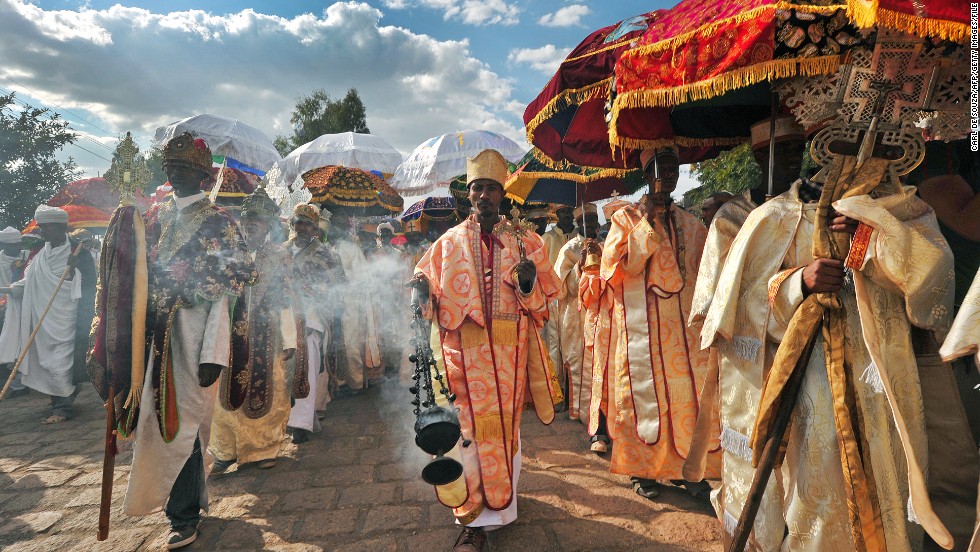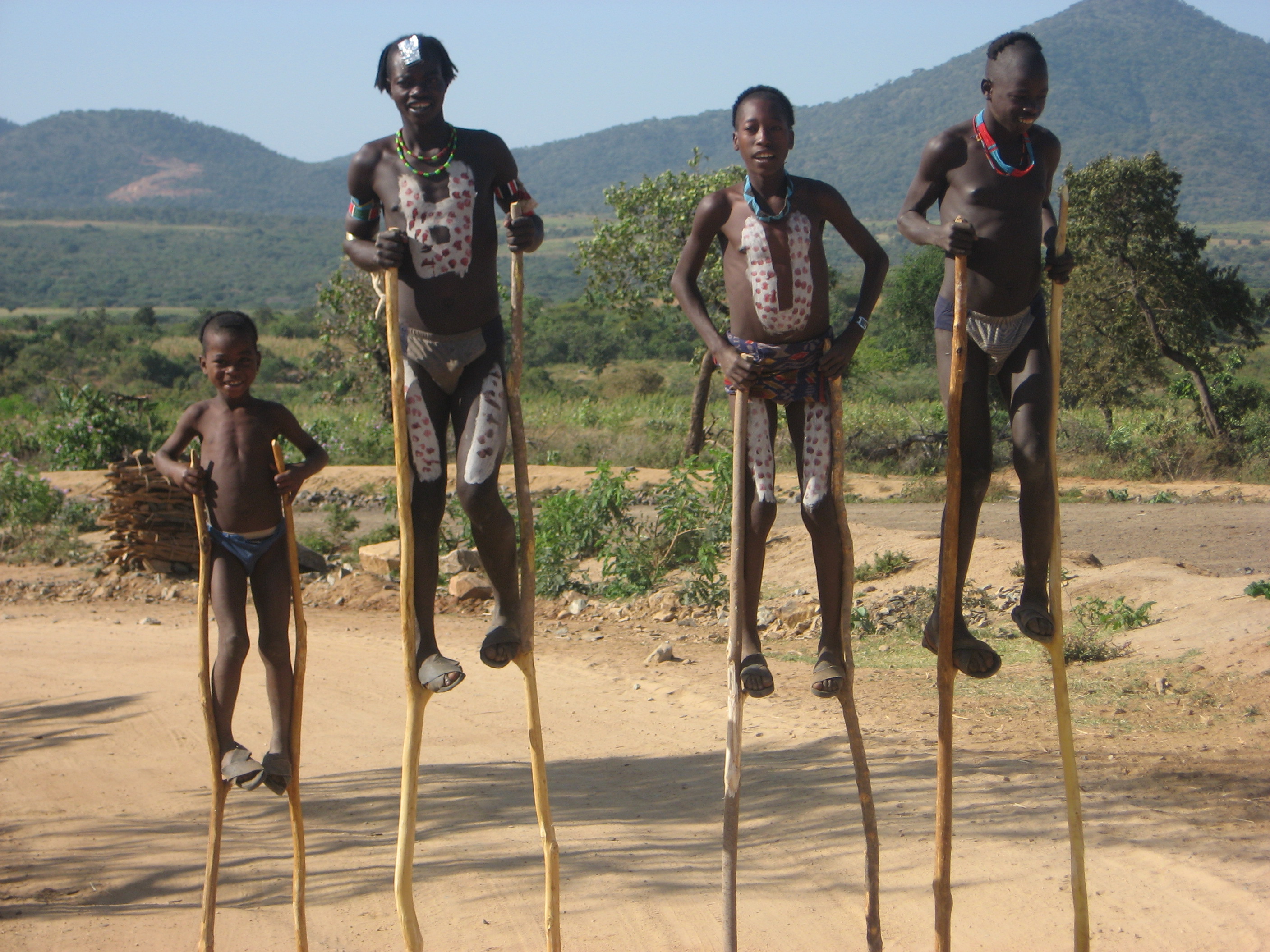Thank you.
alttag

Afica unexplored….discover a new ‘old’ Ethiopia….
“Once a year, go someplace you have never been before” - Dalai Lama
Africa. There is nowhere like it on the planet for wildlife, wild lands & rich traditions that endure. Prepare to fall in love. And East Africa is a wild realm of extraordinary Landscapes, People & Wildlife in one of the Planet's most beautiful corners. A Cradle of Mankind, as the first species of the Homo genus evolved here & migrated to the rest of the world. The 2 highest mountains in Africa are located here: Mount Kilimanjaro & Mount Kenya. River Nile, the longest in Africa originates from the Continent’s biggest, Lake Nyanza (also known as Lake Victoria).
How do you capture the essence of Africa on paper without using up every cliché in the book? No other continent comes close to it for scale, variety and pure, raw impact. In Ethiopia, you would be hard-pressed to find a better combination of Nature & Culture. Full of Abyssinian abysses, origin of the Blue Nile, Caravans of Salt-laden Camel Trains. The best part: there will be no crowds to hinder the experience. Come…let us help you discover Abyssinia…
Africa’s natural history alone would make a dozen visits worthwhile - where else on earth can you fall asleep to the sound of Lions roaring, or watch a million Flamingos take off from the waters of a remote Soda Lake? Parts of Africa boast scenery so spectacular they will damn near blow your mind, but the essence of this incredible Continent isn’t in any Desert, Mountain or Lake. It is the spirit of the People - pushing, shoving, sweating, dancing, singing & laughing - that infects so many Visitors with a travel bug so powerful they will never stop coming back, sometimes against all sense or reason.
Debate with venerable Merchants among the cool, narrow streets of an Arabic Medina, dance to the thumping Reggae beats coming from a Market Stall, or shoot the breeze with Fishermen under Indian Ocean Palm trees & you will be struck more than anything else by the honesty, warm-heartedness & vitality of the Africans.
Prior to Colonialism, the Swahili Coast, which comprised the coastal areas of what is today Kenya, Tanzania & northern Mozambique was a very prosperous region, being home to numerous wealthy City-states such as Zanzibar, Mombasa & Kilwa Kisiwani. Zanzibar in particular, was the hub of Trade Routes that went across the Indian Ocean & Sahara Desert, including that of the Arab Slave Trade.
In the late 19th century, the British Empire tried to create a chain of colonies from Cape to Cairo, competing with German East Africa until the defeat of Germany in World War I, after which present-day Tanzania was transferred to the British. Ethiopia famously resisted European colonialism (except a brief occupation by Italy in the 1930s), & the Dervish State wasn't colonized until after most other pre-colonial African States.
East Africa's dramatic landscapes & the Wildlife that inhabit them, are a major draw. This is the part of Africa where you can find the quintessential savanna Safari experience, venturing out in a Land Rover across the plains to scout the vaunted "Big Five" (Lions, Leopards, Elephants, Rhinos & Buffaloes). Going on a Safari may be something of a travel cliche, but we are yet to find a Traveller who has watched the Wildlife in motion in the Masai Mara, stumbled upon the paradise that is the Ngorongoro Crater, or communed with Gorillas in Bwindi Impenetrable Forest & has not been reduced to an ecstatic state of childlike wonder. Try it once & we guarantee you will dream about coming back for the rest of your life. It is a fantastic, enlightening, surprising & intriguing Continent.
Africa is called the Cradle of Humankind because Human life originated there. The name applies more specifically to a UNESCO World Heritage listed paleoanthropological site located about 50 km northwest of Johannesburg, in South Africa where the largest known concentration of ancestral Human Remains anywhere in the world, other Fossils, Tools & traces of early Humans, have been found. The oldest evidence dates back 3 million years or more tracing & providing valuable information about Human evolution.
Africa is not always an easy place to travel in. It can be frustrating & challenging at times. Hardships & logistical disasters can happen. But don’t believe everything you see on CNN & Fox or other western Channels whose coverage of a place is prevaricated on political expediency. The list of delinquents changes often & the same Destination could be denigrated today & accorded glowing coverage tomorrow.
And now let us talk about Ethiopia, a beautiful country blessed with a peerless History, minor Wildlife & some of Africa's most soulful People.
Nature's Bounty | Historical Wonders | Proud Traditions
Ethiopia, one of the oldest States still in existence, direct successor to the Axumite Empire that flourished in the region during the 1st Millennium AD & played a key role in the early development of Islam & Christianity. is like nowhere else on the Planet.
The Ethiopian Empire historically known as Abyssinia or simply Ethiopia, was a sovereign State that encompassed the present-day territories of Ethiopia & Eritrea. In the Horn of Africa, it is a rugged, landlocked country split by the Great Rift Valley. With archaeological finds dating back more than 3 million years, it is a place of ancient culture. You don’t explore Ethiopia for a relaxing getaway, you venture here to be moved. And moved you shall be.
Almost the only African country to have escaped Colonialism, has retained much of its cultural identity. It all begins with Lucy, one of their most celebrated ancient ancestors, moves effortlessly into the realm of ancient Aksum with its Oblelisks & echoes of the Queen of Sheba, & then takes on power & passion as Christianity, with mysterious echoes of ancient Israel, takes centre stage.
And unlike so many other places on the Continent, the Ancients here left behind some extraordinary Monuments to faith & power which serve as focal points for so many wonderful journeys. According to Scholars, the fact that only one Civilisation developed in sub-saharan Africa in pre-Christian times, namely that of the ancient Abyssinians, was due solely to its geography.
It is now known that Semitic populations from Arabia settled on the African Highlands in the 1st millennium BC & integrated with the local people, giving rise to the Abyssinian stock, a people with semitic features & dusky skin, much fairer than the other African natives. These people founded the Kingdom of Axum (also known as the Kingdom of Habashat, one of the south Arabian Tribes that took part in founding of Axum). The Abyssinians are the descendants of the Axumites. The name Abyssinia is derived from Habashat, (means “mixture of populations” in Arabic).
Abyssinia was an immense region occupying most of the Ethiopian Plateau, all the Eritrean highland, provinces of Tigray, Begemeder, Gojam. Around 50 BC, an anonymous Levantine compiled a Portulan Chart (Nautical Charts) entitled “Circumnavigation of the Eritrean Sea”. Although in those times, the Eritrean Sea included the present Red Sea as well of much of the Indian Ocean, the Author dedicated very little space to the African Coasts compared to prolific information about the Coasts extending from Arabia to India. Adulis, situated opposite Axum, “country of the Arabs”, is the only City on the African coast mentioned in that Chart. This implies that Africa was then rarely considered by Navigators for looting, at that point.
Abyssinia is on one of the greatest high Plains in the world. In a relatively small space, it includes 80% of the Mountains in Africa above 3000 metre high. 31 are more than 4000 metre, the highest, Ras Dashan, reaching 4620 metre & about 60 Peaks at 3000 metre. At such great heights & low latitudes, spring weather is enjoyed all year round, there is plenty of rain & fewer of the tropical diseases that devastate Africa. The Ethiopian Plain divided by the Rift Valley, features a unique ecosystem which hosts an enormous variety of Animals & Insects. Until a few decades ago, Abyssinia had the greatest number of Plant species in the world, many endemic & the greatest variety of Birds.
Much later, when Humans had populated all parts of the Earth, the morphology of this Plateau was practically impossible for aggressive neighbouring peoples: its impenetrable Mountains defended it to north, east & west, while in the south, the Somali desert discouraged Intruders. These were all ingredients for the development of what ancient Historians knew as the Land of the Habashat, an advance Civilisation with Writing & Coins, that traded with the rest of the world & built Monuments centuries back which still exist today.
The tallest of the famous Obelisks of Axum is 33.5 metres high, with a base measuring 3 x 2 metres & a weight of more than 500 tons. It is the largest ‘single piece’ Monolith ever cut, transported & erected in antiquity. It remains a mystery how it was transported 4 km from the Quarry where its imprint is still visible. Even today, it would be a technological & scientific challenge to transport & erect it. The Cult of the Dead, the rich quality of life & the search for knowledge brought renown to the Kingdom of Axum. According to ancient Persian & Roman Manuscripts, Persia, Rome, Abyssinia & China were the 4 great Civilisations / Kingdoms at the time of Christ.
The legendary Axumite Civilisation was short lived: 400 years after the arrival of Christianity, in the 7th century AC, it was suddenly eclipsed. The reasons were presumably many & not all of them have yet been clarified. In the 7th century AC, there was a sudden climatic change throughout Abyssinia. In the Horn of Africa, Monsoons normally blow from SW in the period May-September, followed by an inversion to northeasterlies from November to April. These winds were exploited by Arabs & Indians to sail eastward in Winter & Spring and return the following Summer & Autumn.
Monsoon reached the Ethiopian High Plain, in 1st century AC, the resulting in at least 7 full months of rain each year. This enabled at least 2 Crops per year, often 3, & the growth of dense Forests over at least half of the Plateau. Enormous quantities of water drained from the Mountains towards the Deserts & the Sea in large Rivers that modelled the Land & the Coastline. Near Adulis, 2 of these Rivers extended the land & silted up the Sea, making Navigation difficult. When the Monsoons suddenly ceased to reach the high Plain in the 8th century, the wet season was reduced to only 3 months as the annual Rainfall dropped sharply. Consequently, Axum found itself without a Port & with serious drought problems & so, the decline commenced.
The final end of the Kingdom was decreed by the Arab conquest of Egypt, which removed Adulis from the Trade Route to India. The subsequent invasion by the Beja Tribes & the destructions by the Agaw Queen Gudit of Damot in the 10th century completed the fall of Axum. Abyssinia remained isolated from the rest of the world for nearly 800 years, until the dynasty of the King of Gonder raised it from obscurity.
Christianity reached Abyssinia not much later than it reached Rome, through St. Frumentius in 4th century but developed much more readily, suggesting a receptivity that only a great Civilisation can create. Abyssinians converted while neighbouring populations remained “pagan”, later to be converted to Islam. The intimidating Christians, had maintained a level of Civilisation which they exploited to subjugate the various Tribes & it was only with much effort that they succeeded in holding together a Kingdom 3 times the area of France.
When the Italians landed at Massawa at the end of the 19th century, Forests covered 30% of Abyssinia & not much else had changed for 100s of years. They arrived quietly, timid in their Youth, inexperienced in Politics, ignorant of African affairs & colonial missions, lacking the background & logistics of other Colonialist countries such as England & France. They were driven largely by emulation, pride & fear of missing out on a slice of the Black Continent. Ingenuous as they were, they stumbled into the only once civilised part of sub-saharan Africa & the only part that had succeeded in defending itself for 1,000s of years against intruders. The Italian adventure lasted for several decades with ups & downs, resolving suddenly between 1936 & 1941 with the conquest of Ethiopia, followed almost immediately by loss of its entire colonial Empire.
Ethiopia’s storied & sovereign history has left its wide-ranging & fertile highlands laden with historical treasures, ranging from the ancient Tombs & Obelisks of Aksum to 17th century Castles & burnt-out Russian Tanks. And it is not dubbed the Cradle of Humanity for nothing; archaeologically speaking, Ethiopia is to sub-Saharan Africa what Egypt is to North Africa.
Ethiopia is mentioned variously in every major division of the Hebrew Bible & used interchangeably with Cush13 & it was later identified with Nubia & Aksum. In its broader sense, the name Aethiopia should not be equated with Ethiopia of today which was designated in 1885.
It is one of Africa's most beautiful countries & its landscapes are epic in both scale & beauty. Travellers are thrilled by the amazing backdrop of Canyons, Chasms, Lakes, Savannah plains & high Plateaus - not to mention the mesmerising desolate Danakil Depression, peppered with an astonishing 25% of Africa’s active Volcanoes.
Ethiopia begs outdoor escapades with its larger-than-life, hallucinatory landscapes. Hiking & Trekking in the Simien & Bale Mountains are obvious choices. Then there are those ‘must-do’ moments, such as exploring the surreal depths of the Danakil Depression in the north, an enchanting & unforgivingly hostile environment offering extreme adventure, or climbing up cliff faces to remote rock-hewn Churches in Tigray. Last but not least, the country ranks among Africa’s best Birdwatching destination, with plenty of endemic Species. You will be rewarded with memorable experiences.
Wade through incense into a medieval world hewn from stone in Lalibela & watch the line between past & present blur, while taking part in striking Christian Ceremonies that haven’t changed in 1000 years. A highlight of any trip to the Horn is witnessing one of these Ceremonies & Festivals - Christian, Islamic or Animist, that are an integral part of traditional Culture in the region. Many are more than a peek into the Nation’s past - village Events, such as a Wedding, a Rite-of-Passage celebration or even a day at the local Market.
Ethiopia’s landscapes are no less dramatic & range from the Simien Mountains National Park & Bale Mountain National Park, which proffer tremendous opportunities for Trekking & innumerable interactions with dozens of animals & birds seen nowhere else on earth. The remote lowlands in the sultry southwest are also home to untold adventures & house a wide variety of Africa’s most fascinating Tribes, including Afar, Mursi, Karo, Hamer, Nuer & Anuak, whose ancient Customs & Traditions have remained almost entirely intact for centuries. Staying with these communities is a great introduction to a way of life once followed by all of humankind.
Although it is anything but Desert wasteland or a perpetual home of Famine & War (engineered by the West, invariably), Ethiopia is monetarily poor & travel here is tough, both physically & mentally. Certainly not as developed as the more famous African destinations. However, those willing to take some doses of displeasure to discover a unique bounty of treasure, will be pleasantly rewarded.
History & a unique experience amidst idyllic scenery are just the beginning. Testing, awe-inspiring & heartbreaking - a journey you will never forget. Take the plunge now & yep….the Ethiopians are waiting. A warm welcome awaits you & The Journeys is ready to take you on well, a journey (or journeys) of discovery.
Come…be inspired & discover the World…
We are in the process of updating our Offerings of experiential journeys to Ethiopia. Please contact us in the interim if you want to explore more options & we will be happy to customise & offer suggestions based on your personal preferences…

![]()
alttag
alttag
alttag
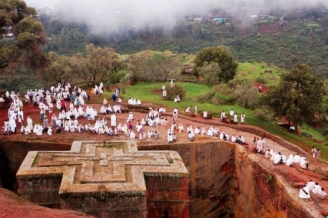
Discover: Addis Ababa * Bahir Dar * Gondar * Simien Mountains * Aksum * Lalibela * Addis Ababa

Discover : Addis Ababa * Tiya + Langano * Arba Minch * Jinka * Turmi * Yabello * Awassa * Addis Ababa
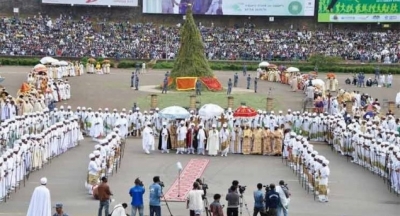
Discover : Addis Ababa * Bahir Dar * Simien Mountain * Gondar * Lalibela * Aksum * Langano * Arba Minch * Jinka * Turmi * Arba Minch * Addis Ababa
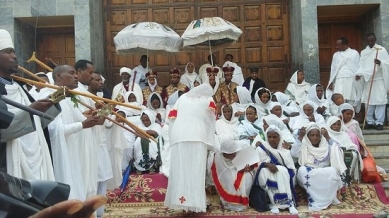
Discover : Addis Ababa * Mekele * Ghiralta * Axum * Simien Mountain * Gondar * Bahir Dar * Lalibela * Addis Ababa
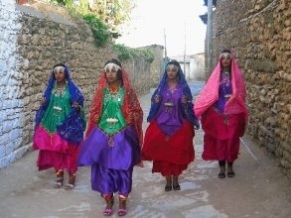
Discover: Addis Ababa * Harar * Afar Region * Addis Ababa * Bahir Dar * Gondar * Simien Mountain * Lalibela * Addis Ababa



